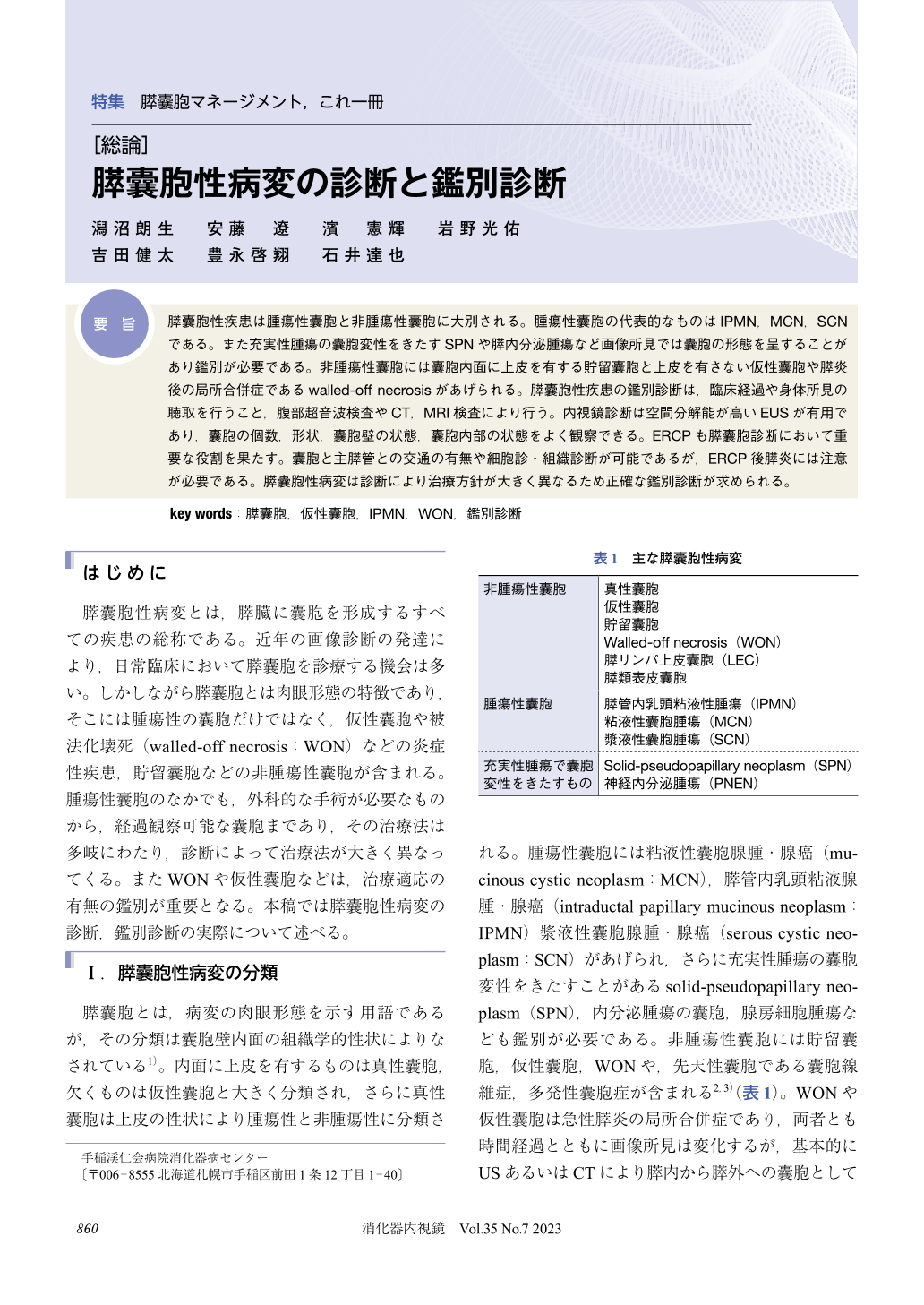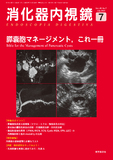Japanese
English
- 有料閲覧
- Abstract 文献概要
- 1ページ目 Look Inside
- 参考文献 Reference
要旨
膵囊胞性疾患は腫瘍性囊胞と非腫瘍性囊胞に大別される。腫瘍性囊胞の代表的なものはIPMN,MCN,SCNである。また充実性腫瘍の囊胞変性をきたすSPNや膵内分泌腫瘍など画像所見では囊胞の形態を呈することがあり鑑別が必要である。非腫瘍性囊胞には囊胞内面に上皮を有する貯留囊胞と上皮を有さない仮性囊胞や膵炎後の局所合併症であるwalled-off necrosisがあげられる。膵囊胞性疾患の鑑別診断は,臨床経過や身体所見の聴取を行うこと,腹部超音波検査やCT,MRI検査により行う。内視鏡診断は空間分解能が高いEUSが有用であり,囊胞の個数,形状,囊胞壁の状態,囊胞内部の状態をよく観察できる。ERCPも膵囊胞診断において重要な役割を果たす。囊胞と主膵管との交通の有無や細胞診・組織診断が可能であるが,ERCP後膵炎には注意が必要である。膵囊胞性病変は診断により治療方針が大きく異なるため正確な鑑別診断が求められる。
Pancreatic cystic lesions are classified into neoplastic cysts and non-neoplastic cysts. The most common types of neoplastic cysts are IPMN, MCN, and SCN. In addition, SPN, which is a cystic degeneration of a solitary tumor, and endocrine tumors of the pancreas may show a cystic appearance on imaging findings and require differentiation. Non-neoplastic cysts include retention cysts with epithelium on the inner surface of the cyst, pseudocysts without epithelium, and walled-off necrosis, a local complication after acute pancreatitis. The differential diagnosis of pancreatic cystic lesions is made based on clinical history and physical examination, abdominal ultrasonography, CT, and MRI. EUS is also used. Accurate differential diagnosis of pancreatic cystic lesions is required because the treatment strategy differs greatly depending on the diagnosis.

© tokyo-igakusha.co.jp. All right reserved.


